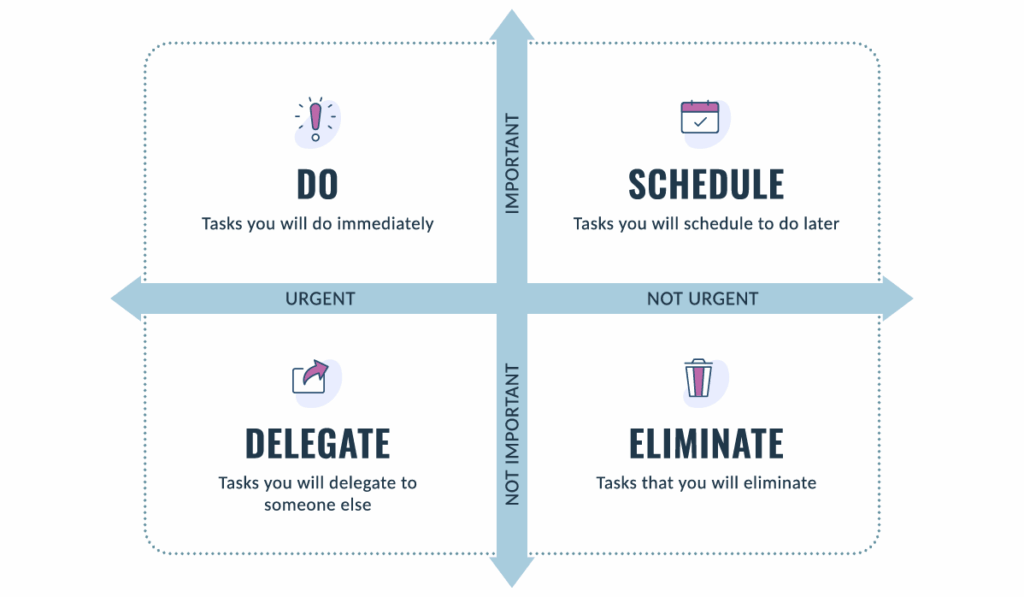Is Multitasking Training Your Brain for Burnout?
We’ve been taught to brag about being great multitaskers, but it’s quietly destroying our focus. In today’s fast-moving, always-on tech world, juggling a dozen priorities feels like the only way to keep up. But the truth is, constant multitasking and triaging don’t make us more productive; they actually shorten our attention span, keep us reactive, and fuel the burnout cycle.
Breaking free starts with a mindset shift: you don’t need to do more, you need to do differently. Learning how to improve your attention span through single-tasking and building intentional recovery into your day, you can protect your focus, increase your impact, and create a sustainable rhythm of work that supports versus sabotages your success.
The Attention Cost of Multitasking
Despite what we like to believe, the human brain isn’t built for true multitasking. What we call multitasking is actually task-switching: rapidly shifting our attention from one activity to another. Each time we switch, the brain has to disengage from one context and re-engage with another, which requires significant mental energy.
This constant switching comes at a high cost. Research shows that task-switching depletes the brain’s glucose, its primary fuel source, leaving us mentally fatigued far sooner than if we had stayed focused on a single task. The productivity impact is striking; this research suggests that multitasking can reduce effective work time by as much as 40%, especially for complex, cognitively demanding tasks.
Over time, the habit of constant switching doesn’t just affect today’s work, it rewires the brain itself. Heavy multitaskers often struggle with sustained focus because their brains have been conditioned for distraction. Instead of building the capacity for deep concentration, multitasking erodes it, making it harder to stay engaged, solve problems, or think creatively in the long run.
The Triaging Trap
If multitasking scatters your focus, triaging keeps you trapped in a state of constant urgency. Triaging (deciding what to tackle based on what feels most pressing) can be useful in true emergencies. But when it becomes your default mode of working, it keeps you perpetually reactive instead of strategic.
Living in “urgent mode” trains your brain to chase what’s loudest rather than what’s most important, meaning you’re always putting out fires but rarely moving the work that matters most forward. This way of working comes with a heavy emotional toll. The constant sense of being “on” elevates stress and anxiety, leaving you wired yet exhausted. Over time, your brain associates work with crisis management rather than creativity or problem-solving.
And here’s the danger: chronic triaging actually conditions your brain for panic. Instead of cultivating the focus needed for deep work, you strengthen the neural pathways tied to stress, which makes it harder to break free from the burnout cycle.
The Burnout Cycle
Multitasking locks you into a destructive loop. The pattern looks like you juggling multiple tasks, which raises stress, which leads to fatigue, which weakens your ability to focus…so you multitask even more to compensate. And the cycle repeats.
Physically, this cycle floods your system with stress hormones like cortisol, keeping your body in a state of high alert. That wired-but-tired feeling? It’s a direct signal that your nervous system is overextended. Professionally, the consequences are just as damaging. Errors increase, innovation slows, and your ability to make thoughtful decisions suffers. Over time, this disengagement affects performance and chips away at confidence and career momentum.
How to Improve Your Attention Span and Break the Burnout Cycle
The good news: you can retrain your brain for focus. Breaking the burnout cycle comes down to two strategies, reclaiming focus with single-tasking and recharging through intentional recovery.
- Reclaim Focus with Single-Tasking
- Prioritize what matters most. Limit yourself to one to three essential tasks each day. Tools like the Eisenhower Matrix can help you separate urgent from important

- Follow the “one tab” rule. Close unnecessary browser tabs, silence notifications, and give your attention to one screen, one task at a time. Follow the “one tab” rule. Close unnecessary browser tabs, silence notifications, and focus on one task at a time.
- A helpful tool is the free Chrome extension OneTab, which converts all your open tabs into a single list you can restore later!
- Batch similar tasks. Group activities like emails, calls, or approvals into designated time blocks to reduce constant context switching.
- Experiment with focus techniques. The Pomodoro Technique—25 minutes of focus followed by a 5-minute break—can strengthen your “attention muscle.” Start with micro-focus intervals (5–10 minutes) if sustained attention feels challenging.
- Prioritize what matters most. Limit yourself to one to three essential tasks each day. Tools like the Eisenhower Matrix can help you separate urgent from important
- Recharge with Intentional Recovery
- Practice mindfulness. Even a few minutes of intentional breathing or mindful walking can reset your nervous system and sharpen concentration.
- Take structured, screen-free breaks. Short walks, stretching, or a cup of tea away from your desk are more restorative than scrolling.
- Protect your sleep. Adequate rest is non-negotiable for cognitive performance and emotional resilience.
- Embrace boredom. Resist the reflex to fill every pause with your phone. Letting your mind wander not only reduces dependency on stimulation but also sparks creativity.
Breathe Calm into Your Work and Life
You don’t need to push harder or squeeze more into your day; you need a system that protects your focus. By breaking free from multitasking, stepping out of triage mode, and reclaiming intentional recovery, you create the space for clarity, productivity, and sustainable growth, and learn how to improve your attention span.
At AnitaB.org, we believe that while protecting your attention is about avoiding burnout, it’s also very much about building the leadership capacity and resilience to drive meaningful impact in tech. Ready to recharge and refocus? Join us at GHC or support our mission to create a future where innovation is powered by balance, representation, opportunity, and sustainable success.
Read more posts from the thread Protect Your Energy: A Guide to Driving Change with Balance

